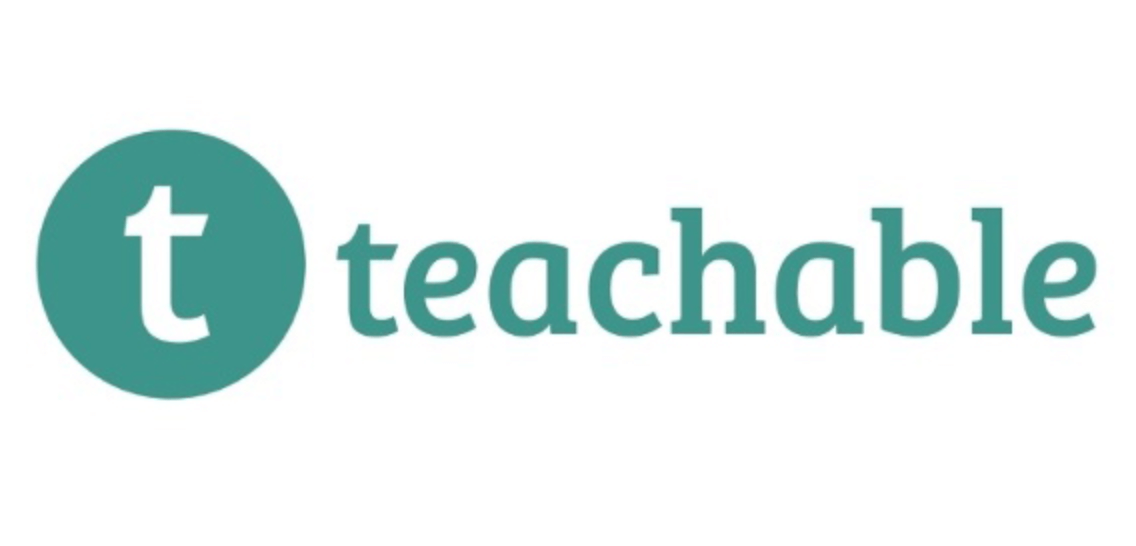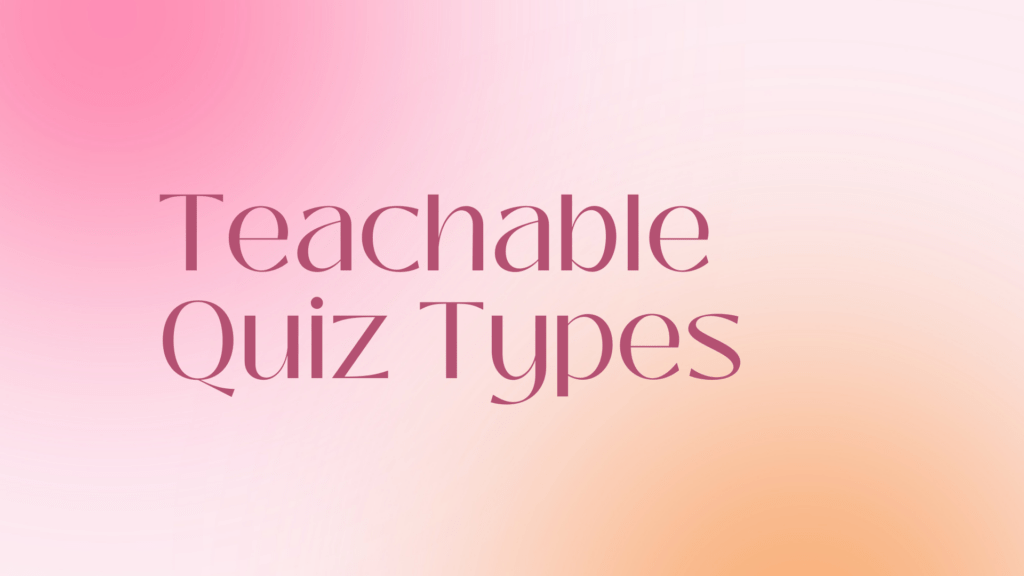As an experienced user of Teachable, I have found that quizzes can be an effective tool for engaging learners and assessing their understanding of course material. This is because quizzes provide a way for students to actively engage with the content and track their own progress. Additionally, quizzes can be adapted to fit a variety of learning styles, from multiple-choice to essay questions, allowing instructors to diversify and tailor their content.
When creating quizzes in Teachable, it is important to consider the different quiz types available and how each type can be used to engage students in different ways. For example, multiple-choice questions allow for a quick assessment of a student’s knowledge base, while essay questions require students to go deeper into the material and provide written explanations for their responses. Other quiz types, such as true/false or fill-in-the-blank questions, can also help to diversify assessments and engage students in different ways. By understanding the different quiz types available, instructors can make informed decisions about which type best fits their course material and learning objectives.

Multiple Choice Quizzes
Explanation of multiple choice questions and answers
Multiple-choice quizzes are a staple of online learning and are a great way for students to test their knowledge. Multiple choice questions consist of a question and several possible answer choices, usually four or five, and the student is asked to select the correct answer. As the instructor, you can customize the multiple-choice questions to include text, images, or even videos. This allows you to create questions that are engaging and informative.
Advantages and considerations when using multiple-choice quizzes
One of the primary advantages of using multiple-choice quizzes is the ease of grading. Thinkific automatically assigns points based on the correct answer, meaning instructors don’t need to manually grade each question. Additionally, multiple-choice questions are a great way to assess student knowledge quickly and effectively. However, it is important to make sure that the answer choices presented are clear and that the correct answer is unambiguous. This will help ensure that students can accurately answer the questions and assess their understanding accurately.

> > Click Here to Start Teachable for Free < <
True/False Quizzes
Definition of true/false questions and responses
True/False quizzes are one of the most popular quiz types in Teachable. As the name implies, this type of quiz requires students to answer a question by selecting either “true” or “false” as their response. These questions can be used to test students on factual knowledge of a topic, as well as their ability to identify false statements.
Benefits and best practices for true/false quizzes
True/False quizzes can be a great tool for assessing student understanding of a concept or topic, as they can quickly and efficiently test their knowledge of the material. Additionally, these quizzes are also flexible and can be used for a variety of topics and subjects. When creating True/False quizzes, it is important to use clear and concise language in order to maximize understanding and avoid any confusion among students. Additionally, make sure to provide accurate feedback for both correct and incorrect answers, as this can help students understand why a particular answer is correct or incorrect. Finally, randomize the order of the questions to prevent cheating.

> > Click Here to Start Teachable for Free < <
Fill-in-the-Blank Quizzes
Description of fill-in-the-blank questions and responses
As an experienced user of Teachable, I have found fill-in-the-blank quizzes to be an effective way to test students’ understanding of course content. In a fill-in-the-blank quiz, students are presented with a statement or prompt with one or more words omitted. They must then attempt to identify the correct word from a provided list of options. This type of question is useful for testing knowledge of vocabulary, grammar, or other facts.
How to create effective fill-in-the-blank quizzes
When creating fill-in-the-blank quizzes within Teachable, it’s important to ensure that the question prompts and responses are clear and concise. To do this, keep the questions as short as possible, and choose words and phrases that are unambiguous. Additionally, when providing answers, give students several close answers to choose from (without being too obvious!), which will help test their understanding of the course content in a more challenging way.

> > Click Here to Start Teachable for Free < <
Matching Quizzes
Introduction to matching questions and options
As an experienced user of Teachable, I am familiar with the various quiz types the platform offers. One type of quiz I have found especially useful is the matching quiz, which allows me to create questions where students must correctly match a set of items. This type of quiz can be a powerful tool for assessing knowledge and testing comprehension in a variety of subject areas.
Tips for designing engaging matching quizzes
When designing a matching quiz, it is important to have clearly defined items that students must match, as well as clear instructions. Additionally, it can be beneficial to have multiple correct answers for each item to give students the opportunity to explore various solutions. I have also found it helpful to provide visual aids, such as images or diagrams, in order to enhance the student experience. Finally, when writing the questions, I like to use language that is concise and direct to ensure students can quickly grasp the concept and answer the question correctly.

> > Click Here to Start Teachable for Free < <
Short Answer Quizzes
Exploring short answer questions and expected responses
As an experienced user of Teachable, I have used the platform’s short answer quiz feature to great effect in my online courses. Short answer questions allow my students to demonstrate their understanding of the course material in their own words, making it an ideal tool to ascertain their knowledge of the subject. When composing a short answer quiz, I typically provide a prompt that allows my students to express their thoughts and ideas in their own words. I then use Teachable’s grading feature to grade the responses to the short answer questions.
Guidelines for using short answer quizzes effectively
When using short answer quizzes, I like to keep the questions concise and to the point. This helps ensure the students understand what information is expected of them and keeps them focused on the task. Additionally, I make sure to provide clear grading criteria for each quiz question. This allows me to evaluate the responses accurately and provide meaningful feedback to my students. Finally, I strive to provide an appropriate level of challenge by asking questions that are neither too easy nor too difficult. This ensures my students are actively engaged in the quiz and that the quiz results are reflective of their true understanding of the course material.

> > Click Here to Start Teachable for Free < <
Essay Quizzes
As an experienced user of Teachable, I am familiar with the different types of quizzes available. In this section, I will discuss the main features and considerations for essay quizzes and provide tips for writing effective essay questions and grading strategies for assessing student writing.
Definition of Essay Questions and Writing Prompts
Essay questions are designed to assess a student’s understanding of a particular concept. Generally, they require a longer answer than other quiz types, such as multiple choice or true/false. Additionally, they are more open-ended, which allows for a deeper level of analysis and critical thinking from students. Writing prompts, on the other hand, are designed to assess a student’s ability to write coherently and thoughtfully on a given topic. While writing prompts may focus on a specific concept, they often test a student’s writing skills as well as their understanding of the material.
Considerations and grading strategies for essay quizzes
When creating an essay quiz, it is important to consider the complexity of the question, the time limit for the quiz, and the grading criteria. For example, if the question is too complex, students may be unable to answer it within the time limit. Additionally, it is important to establish a scoring rubric that will guide the grading process and ensure that students are assessed fairly. One way to do this is to break down the essay into different components, such as grammar and structure, clarity of thought, and understanding of the material. By doing this, teachers can assign points per component, which will give them a better understanding of how the student performed on the quiz overall.
Overall, essay quizzes are a great way to test a student’s understanding and critical thinking skills. However, it is important to consider the complexity of the questions, the time limit, and the grading criteria in order to ensure that the quiz is fair and effective. With the right considerations, essay quizzes can be an effective tool for assessing student knowledge.

> > Click Here to Start Teachable for Free < <
Interactive Quizzes
Overview of interactive quiz formats
In Teachable, there are a few different types of quizzes available for course creators to use. These include multiple-choice, drag-and-drop, image-based, and short-answer quizzes. All of these quiz formats are interactive and engaging for students and provide different ways to assess knowledge and track progress.
Multiple-choice quizzes are the most common type of quiz and involve questions with multiple answer choices, from which the student must select the correct one. Drag-and-drop quizzes require students to drag answer choices into their correct positions, thereby engaging them in a more interactive manner. Image-based quizzes involve inserting an image into the quiz question and may require the student to identify specific elements in the image or drag them to the correct answer choices. Finally, short-answer quizzes enable students to enter their own written responses to questions.
Examples and benefits of using interactive quizzes in Teachable
Teachable’s interactive quizzes provide a great way to engage your students and track their progress. For example, if you are teaching a course on web design, you can create image-based quizzes to assess the student’s knowledge and understanding of the concepts covered in the course. Additionally, drag-and-drop quizzes can be used to reinforce the student’s understanding of a given concept by requiring them to place answer choices in the correct order or categorize items according to specific criteria.
Overall, interactive quizzes are an ideal way to assess student knowledge and track progress in a fun and engaging way. Teachable’s user-friendly quiz builder makes it easy to create interactive quizzes that will help your students learn and retain knowledge efficiently.

> > Click Here to Start Teachable for Free < <
Best Practices for Creating Quizzes on Teachable
Tips for crafting clear and well-structured quiz questions
As an experienced user of Teachable, I understand the importance of crafting clear and well-structured quiz questions. For starters, I recommend creating multiple-choice and true/false questions that are concise and to the point, as this ensures that students can quickly and easily answer the questions. Also, be sure to provide a reasonable amount of time for students to answer each question, as this will give them a better chance of completing the quiz successfully. Additionally, it is important to make sure that the questions are free from any bias or leading language, as this can cloud a student’s understanding of the quiz material.
Strategies for providing useful feedback and explanations
When it comes to providing useful feedback and explanations, I believe that it is crucial to give students the opportunity to review their answers and understand why their responses were incorrect, if applicable. To achieve this, I recommend creating comprehensive answer explanations that explain why each answer choice is correct or incorrect. Additionally, I suggest providing feedback on a question-by-question basis, as this allows students to identify their strengths and weaknesses and improve their knowledge of the quiz material.

> > Click Here to Start Teachable for Free < <
Aligning Quiz Types with Learning Objectives
Connecting quiz types to different learning outcomes
As an experienced user of Teachable, I understand the importance of connecting quiz types to specific learning outcomes. Depending on the lesson objectives and content, I aim to design quizzes that are tailored to the subject matter and reinforce key concepts. For example, when teaching a language course, I find it useful to incorporate multiple-choice questions to assess knowledge of grammar rules and vocabulary. On the other hand, when teaching a course on photography, I might use fill-in-the-blank questions to evaluate my knowledge of basic photography concepts.
Designing quizzes that reinforce key concepts and skills
In addition to connecting quiz types to different learning outcomes, I also consider the need to design quizzes that reinforce key concepts and skills. For instance, when teaching a course on web development, I might design a quiz that requires students to write a piece of code in order to test their ability to apply the concepts they have learned. Additionally, I also think it is useful to include open-ended questions that require students to analyze and discuss the topics they have been exposed to. By doing this, I can ensure that my students are properly engaged with the course content and have a better chance of understanding the material.

> > Click Here to Start Teachable for Free < <
Conclusion
Recap of the various quiz types available in Teachable
Teachable offers a range of quiz types to help facilitate learning experiences for students. From my experience using Teachable, I have had success utilizing multiple quiz types, including multiple-choice, fill-in-the-blank, free response, and image-based. Each type has its benefits and is suited for different types of courses and learning objectives. Multiple-choice questions are useful for quickly assessing student knowledge or helping them review material, while fill-in-the-blank questions can be great for testing students’ recall of specific facts and figures. Free-response questions are great for open-ended analysis, while image-based questions allow students to demonstrate their understanding of a concept in a creative manner.
Encouragement to utilize a mix of quiz types to enhance learning experiences
In my experience using Teachable, I have found that utilizing a mix of quiz types is the best way to create engaging learning experiences for students. By incorporating different types of quiz questions, educators can create courses that are dynamic, interactive, and better suited for assessing student knowledge. For this reason, I highly recommend using a variety of quiz types when creating courses in Teachable.
